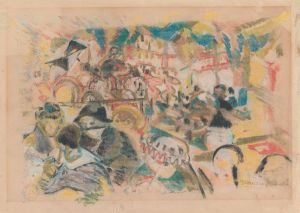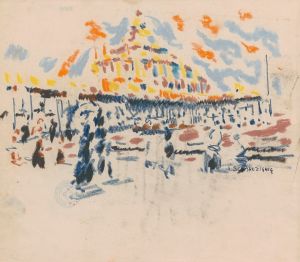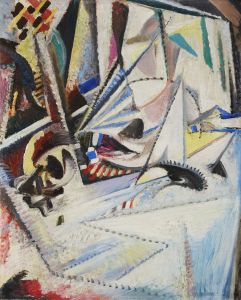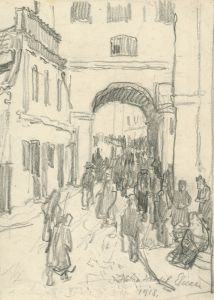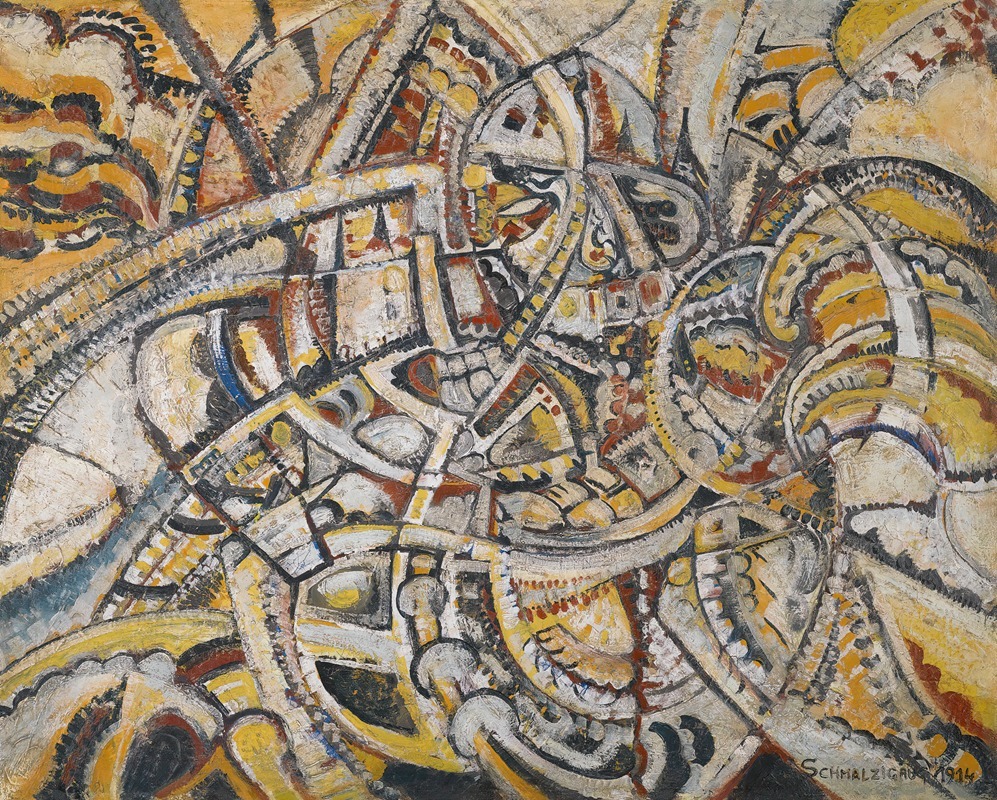
Composition Futuriste
A hand-painted replica of Jules Schmalzigaug’s masterpiece Composition Futuriste, meticulously crafted by professional artists to capture the true essence of the original. Each piece is created with museum-quality canvas and rare mineral pigments, carefully painted by experienced artists with delicate brushstrokes and rich, layered colors to perfectly recreate the texture of the original artwork. Unlike machine-printed reproductions, this hand-painted version brings the painting to life, infused with the artist’s emotions and skill in every stroke. Whether for personal collection or home decoration, it instantly elevates the artistic atmosphere of any space.
Jules Schmalzigaug (1882–1917) was a Belgian painter associated with the Futurist movement, an avant-garde art movement that originated in Italy in the early 20th century. Schmalzigaug is one of the few non-Italian artists to have embraced Futurism, which emphasized themes of modernity, dynamism, and the energy of contemporary life. His works often explored the interplay of light, movement, and color, reflecting the influence of Futurist ideals.
"Composition Futuriste" is one of Schmalzigaug's notable works, created during his engagement with the Futurist movement. The painting exemplifies the core principles of Futurism, particularly its focus on capturing motion and the vibrancy of modern existence. Schmalzigaug's use of fragmented forms and dynamic lines in this composition reflects the Futurist interest in depicting the sensation of speed and energy. The painting also demonstrates his mastery of color, as he employed vibrant hues to evoke a sense of rhythm and movement.
Schmalzigaug's exposure to Futurism began during his time in Italy, where he encountered the works and writings of key Futurist figures such as Filippo Tommaso Marinetti, Umberto Boccioni, and Giacomo Balla. Inspired by their ideas, he adopted their techniques and principles, adapting them to his own artistic vision. His works, including "Composition Futuriste," are characterized by a unique synthesis of Futurist dynamism and his personal sensitivity to color and light.
Despite his contributions to the movement, Schmalzigaug's career was tragically short. He returned to Belgium at the outbreak of World War I and struggled with the challenges of war and personal difficulties. In 1917, he died by suicide at the age of 35. His body of work, though limited, remains an important testament to the international reach of Futurism and its influence beyond Italy.
"Composition Futuriste" is housed in the Royal Museum of Fine Arts in Antwerp, Belgium, where it is part of the museum's collection of modern art. The painting continues to be studied and appreciated for its innovative approach to form and color, as well as its place within the broader context of early 20th-century European art.










